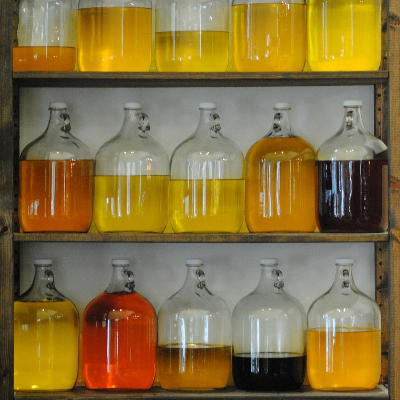Menu
-
-
F.A.Q
- How to identify genuine agarwood chip, natural or cultivated
- How to identify oil injection / absorption fake agarwood beads
- How to know if there are more than one oil in your oil
- How to make your wood bracelet or mala darker
- How to tell if an Agarwood bead sinks WITHOUT sinking it under water?
- How does back flow incense work and how do you burn it?
- Where to start if you don't know what agarwood is ?
- Why are you losing money if you buy seeds and plants?
- Which agarwood incense should I choose?
- Frequently Asked Questions
- Agarwood Related Articles
- Shipping
-
SHOP - Agarwood
-
SHOP - Other Fragrant Wood
-
SHOP - Incense Holder and Burner
-
- FREE Oud Oil guide
- Testimonials
- "Why did you buy this?"
- Contact us
- About Us
- +61430284329
- Login
-
English


Is Agarwood incense the same as dhoop stick?
August 25, 2025 10 min read
What Are Dhoop Sticks?

Dhoop sticks, often referred to in Hindi as "dhup" batti, are a type of incense made from natural ingredients such as resins, gums, charcoal, and essential oils. A regular incense stick usually contains a core bamboo stick. A dhoop stick is generally coreless. Dhoop stick is thicker compared to a regular incense stick, therefore, it produces a thicker, more intense fragrance and smoke.
These sticks have been used for centuries in India's temples, worship rituals, and spiritual practices. Today, they have moved beyond purely religious contexts. Some people enjoyed burning these thick incense sticks for their aroma in meditation, yoga, and general well-being. Due to producing a large amount of smoke, many people dislike dhoop sticks.
The Difference Between Dhoop and Incense Sticks
Core Bamboo Stick vs Coreless
1. Dhoop ( Thick Coreless Incense)
-
Characteristics: It is always thick and comes in many forms, including sticks and cones.
-
Smoke Level: Due to its thickness, dhoop produces a high volume of smoke.
-
Ingredients: The composition can vary widely, from entirely natural plant materials to perfumed charcoal, or a mix of both.
2. Agarbathi (Incense with a Bamboo Core) This is the most widely recognised form of incense stick. There are generally three subcategories:
-
Dipped Agarbathi: The most basic type. A blank stick, often made of charcoal or sawdust, is dipped into liquid perfume or fragrance oil.
-
Masala Agarbathi: Traditionally, this is a paste made from 100% natural aromatic ingredients (herbs, resins, oils) that is hand-rolled onto the bamboo core. However, many popular modern "masala" brands now also include charcoal and liquid fragrances in their recipes.
-
Fluxo Agarbathi: These are extra-thick Agarbathi sticks that are heavily perfumed and produce an intense amount of smoke.
Fragrance and Aroma Profile
-
A Dhoop incense stick tends to have a stronger, smokier, and more traditional fragrance.
-
Generally, Indian incense usually highlights floral fragrances such as rose, jasmine, and sandalwood, offering a lighter and more delicate aroma.
This difference is why dhoop sticks are often chosen for temples and rituals, while incense sticks are more common in homes and everyday use.
There are no strict rules, and both are used in all settings; there are cultural and practical reasons for this general preference.
Dhoop Sticks: Purity, Potency, and Ritual Significance
Dhoop is traditionally considered a more potent and pure form of incense, making it highly suitable for formal rituals, temple worship (puja), and sacred ceremonies.
-
Concentrated Aroma and Smoke: Dhoop is made from a dense paste of herbs, resins, ghee, and aromatic woods without a central bamboo stick. This coreless construction means that 100% of the burning material is fragrant. It produces a thicker, more voluminous, and potent smoke, which is believed to be more effective at purifying a larger space like a temple and creating a sacred atmosphere.
-
Symbolism of Purity: In some traditions, the absence of the bamboo core is seen as a purer offering. The smoke, which is believed to carry prayers to the deities, is composed solely of the sacred ingredients.
-
Connection to Ancient Practices: The use of dhoop is deeply rooted in ancient Hindu scriptures and traditions. Early forms of incense were powders or pastes (dhoop) burned in special containers. Using dhoop connects modern worship to these age-old practices, adding a layer of historical and spiritual significance to the ritual.
-
Specific Ritual Roles: The dense smoke is thought to be highly effective at cleansing a space of negative energies and inviting the divine. This makes it ideal for specific rituals, meditation, and ceremonies where creating a powerfully sanctified environment is the primary goal.
Agarbatti (Incense Sticks): Convenience and Everyday Ambience
Agarbatti, the familiar incense stick with a bamboo core, is incredibly popular for its convenience, variety, and the gentler atmosphere it creates, making it perfect for daily use in homes.
-
Subtler Fragrance and Lighter Smoke: Because a portion of the stick is the bamboo core, the smoke from agarbatti is generally lighter and less intense than that of dhoop. This is often preferred for smaller, enclosed spaces like rooms in a house, where the heavy smoke of dhoop could become overwhelming.
-
Convenience and Ease of Use: Agarbatti is simple to light and place in a holder. The bamboo end provides a clean, safe way to handle the stick. Their consistent and predictable burn makes them easy to incorporate into daily routines, such as morning prayers, meditation, or simply to create a pleasant-smelling home.
-
Longer, Slower Burn: Agarbatti typically burns more slowly and for a longer duration than a dhoop stick of a similar size, providing a sustained, gentle fragrance.
-
Wide Variety of Fragrances: The manufacturing process for agarbatti lends itself to a vast array of scents, from traditional sandalwood and jasmine to more modern floral, fruity, or therapeutic aromas. This variety allows people to choose fragrances based on their mood, the occasion, or for aromatherapy purposes, making it a versatile household item.
In essence, the choice between dhoop and agarbatti often comes down to the desired intensity and purpose:
-
Dhoop is chosen for its powerful, purifying, and deeply traditional qualities, making it the preferred option for creating a potent spiritual atmosphere in temples and during significant rituals.
-
Agarbatti is favoured for its convenience, subtlety, and variety, making it the everyday choice for personal devotion, meditation, and creating a calming, fragrant ambience within the home.
Main Uses of Dhoop Sticks
Religious Ceremonies and Temples
In India, burning dhoop sticks during worship and rituals is a symbol of devotion. The smoke and flame are believed to purify the atmosphere and invite divine presence.
Meditation and Spiritual Practices
Many people incorporate dhoop incense into their meditative practice. The enchanting fragrance helps the mind relax, increases focus, and enhances the overall spiritual experience.
At Home for Well-being
Burning dhoop sticks at home is considered a way to remove negative energy, spread positive vibes, and create a sense of peace and well-being.
Key Ingredients of Dhoop Sticks
-
Natural Fragrances & Essential Oils – Extracted from flowers, herbs, and woods.
-
Floral Scents – Rose, jasmine, and sandalwood are commonly used for their calming effects.
-
Resins, Gums & Charcoal – Traditional binding agents that also enhance the smokiness.
This combination of natural ingredients produces a fragrance that lingers long after the stick burns out, creating an atmosphere that feels both sacred and serene.
How to Burn Dhoop Sticks Properly
-
Step 1: Hold the tip of the stick to a flame until it catches fire.
-
Step 2: Let it burn for a few seconds, then blow out the flame so only a glowing ember remains.
-
Step 3: Place it in a heat-proof holder or plate to allow it to burn gradually.
-
Step 4: Ensure proper ventilation, as dhoop smoke is more intense than incense smoke.
Benefits of Dhoop Incense
-
Mental Calm & Focus – Helps with relaxation, yoga, and meditation.
-
Spiritual Benefits – Enhances prayer rituals and spiritual connection.
-
Cleansing the Atmosphere – Removes stale odours and creates a fresh, sacred environment.
-
Well-being – one study suggests that burning incense may have a positive impact on mood and stress relief (Nguyen et al, 2025).
Problems with burning incense
Traditional incense burning may negatively affect brain function in humans
A longitudinal study in older adults showed that frequent indoor incense use was linked to poorer cognitive performance and decreased brain connectivity. It also interacted with health conditions like diabetes and hyperlipidemia to further impair cognition ( Wong et al 2020)
Cultural and ritual use of incense may influence perception of well-being
Historical and anthropological research shows incense is used to create calming environments in religious rituals, often linked to mood and spiritual ambiance, but this is not direct scientific evidence of mood enhancement (Malkin, 2016)
History of Dhoop Across India and the World
-
In India: Dhoop has been used for centuries in temples, religious ceremonies, and households. It’s deeply rooted in cultural tradition.
-
Globally: Other cultures also adopted incense in temples, meditation halls, and rituals. In Singapore and South-East Asia, dhoop incense is still widely sold and used.
Dhoop Sticks vs. Agarwood Incense Sticks: A Comparison
Here’s where we position agarwood incense as the luxury alternative
Dhoop Sticks – Affordable & Traditional
-
Widely manufactured in India.
-
Budget-friendly and commonly used in religious contexts.
-
Often made with charcoal and resin, giving them a stronger, smokier aroma.
Agarwood Sticks – Premium & Luxurious
-
Known as the “gold of incense”, agarwood is one of the rarest and most valuable woods in the world.
-
Produces a deep, rich, and enchanting fragrance unlike any other incense.
-
Preferred by wealthier markets for its exclusive and refined aroma.
Why Agarwood is the Better Choice for Refined Living
Dhoop sticks are a powerful link to centuries of tradition, spirituality, and cultural practices. They create a fragrant, sacred environment for worship, meditation, and well-being.
However, for those seeking more than tradition, agarwood incense offers a step into luxury. With its rare, exquisite fragrance and timeless appeal, it transforms incense burning into an experience of refinement and elegance.
If dhoop is the everyday incense of devotion, then agarwood is its premium counterpart, designed for those who appreciate quality, exclusivity, and sophistication.
If dhoop sticks represent tradition, agarwood incense represents luxury. While dhoop is commonly used in temples and homes, agarwood incense is designed for those who want a premium sensory experience that elevates spiritual practices and lifestyle.
Frequently Asked Questions (FAQs)
What is a dhoop stick?
A dhoop stick is a traditional type of incense widely used in Indian rituals and spiritual practices. Unlike regular incense sticks, it does not have a bamboo core. Instead, it is formed entirely from natural incense material such as resins, aromatic gums, essential oils, and powdered charcoal. This structure allows it to burn evenly and slowly, releasing a dense, long-lasting fragrance. Because of its coreless form, dhoop is considered more potent and is especially valued in temples, homes, and meditation spaces.
What is the difference between dhoop and incense sticks?
The difference lies in their construction and the strength of their aroma. Dhoop sticks are thicker, smokier, and coreless, which means the entire stick is made from fragrant material. This makes them more intense and longer-lasting. Incense sticks, on the other hand, are usually lighter and made by rolling fragrant paste around a thin bamboo stick. The bamboo can sometimes produce an unwanted smell when burning, whereas dhoop remains purely aromatic. In simple terms, dhoop is more concentrated and ceremonial, while incense sticks are lighter and better suited for casual, everyday use.
What is the purpose of dhoop?
The main purpose of dhoop is spiritual and ritualistic. In many cultures, it is burnt during prayers, meditation sessions, and important ceremonies to cleanse the environment and create a divine atmosphere. The smoke is believed to carry prayers upwards and to purify the air of impurities. Beyond spiritual use, dhoop is also appreciated for its strong fragrance, which can calm the mind, reduce distractions, and prepare a space for focused meditation or worship.
How do you use dhoop sticks?
Using a dhoop stick is simple but requires care. First, light the tip of the stick until a small flame appears. Let it burn for a few seconds, then gently blow out the flame. The stick will continue to smoulder, releasing thick aromatic smoke. Always place it in a heat-proof holder or dish to catch the ash safely and prevent accidents. Many people position dhoop near entrances, in prayer rooms, or meditation corners so that the fragrance spreads throughout the home or space.
What are the benefits of dhoop incense?
Burning dhoop incense offers both mental and spiritual benefits. The soothing fragrance helps to calm the nervous system, relieve stress, and promote mindfulness. Spiritually, dhoop is associated with cleansing and elevating the energy of a space, making it ideal for rituals and meditation. Many also believe that the natural oils and herbs in dhoop contribute to a sense of grounding, clarity, and emotional balance.
Does dhoop remove negative energy?
Yes. In many traditions, the smoke from dhoop is believed to remove negative energy and restore harmony. Its dense smoke is thought to absorb unwanted influences and refresh the environment. This is why dhoop is often used in households during festivals, after disputes, or when starting something new. It symbolises renewal, protection, and a fresh beginning.
What is dhoop incense called in English?
In English, dhoop is commonly referred to as “incense sticks” or “incense cones.” However, the word “dhoop” specifically describes incense that is thicker, smokier, and made without a bamboo core. Because of this distinction, many prefer to use the original term “dhoop” even when speaking in English, to highlight its traditional Indian origin.
What are dhoop sticks made of?
Dhoop sticks are crafted from a blend of natural aromatic ingredients, which may include:
- Resins such as frankincense or myrrh
- Natural gums like gum arabic
- Essential oils for fragrance and therapeutic effect
- Charcoal powder to aid burning
- Floral or woody scents such as rose, jasmine, or sandalwood
This mixture creates a fragrance that is earthy, intense, and often associated with sacred rituals.
When should you burn dhoop?
Dhoop can be burnt during prayer, meditation, or cleansing rituals. Many households light it in the morning or evening to purify the air and create a calming atmosphere. It is also commonly used during festivals, before important gatherings, or after cleaning a space to ensure the environment feels refreshed and inviting. In meditation, the fragrance helps to centre the mind and deepen concentration.
What can I use instead of incense sticks?
If dhoop or incense sticks are unavailable, you can consider alternatives such as:
- Incense cones, which provide a quick and concentrated fragrance.
- Natural resins, burnt on charcoal tablets, offering a traditional aroma.
- Premium agarwood incense, prized for its refined, luxurious scent and spiritual significance.
Each alternative offers a different experience, but all serve the same purpose of fragrance, relaxation, and spiritual upliftment.
Can you make dhoop without fragrance oil?
Sure you can.
In 2014, a government Ayurvedic college in Allahabad, India, has developed a special dhoop, or incense stick, that not only repels mosquitoes but also does so in an environmentally friendly way. Unlike chemical repellents that can leave behind sticky residue or irritating fumes, this herbal dhoop is a natural alternative.
Made from a blend of 27 locally grown plants, the dhoop was developed by Shri Lal Bahadur Shastri Smarak Government Ayurvedic College. According to Professor G.S. Tomar, the college's principal, it is effective against pathogens and mosquitoes that transmit diseases like malaria and dengue (HT Correspondent. (n.d., April 7)
The college demonstrated the dhoop's effectiveness at a seminar and is now preparing for large-scale production. Professor Tomar stated that the dhoop is especially safe for people with asthma and allergies. It is designed to provide protection from mosquito bites for up to eight hours, even after the smoke has dissipated. The dhoop also has a pleasant smell that helps create a stress-free environment.
The cost is estimated to be approximately two rupees per day, with the potential to drop to one rupee per day once mass production begins. The college has submitted a proposal to the state government to promote the dhoop as a way to help reduce the number of malaria and dengue cases in the community.
Our Agarwood incense is the same. We make it with actual material: agarwood chips, not fragrant oil. The aroma is subtle and delightful to enjoy.
Click here for this agarwood incense, perfect for your daily Puja
Reference
HT Correspondent. (n.d., April 7). A ‘dhoop’ that also wards off mosquitoes. Hindustan Times (Lucknow), p. 1.
Final Thoughts
While burning incense may show potential stress-reducing effects in animal studies, traditional incense burning is more often associated with health risks than mood benefits in humans. Burn in moderation in a well-ventilated area are the two main keys to enjoy incense.
Our Agarwood incense sticks are not the same with Dhoop incense sticks because of their thickness. Our incense sticks burn with less smoke and do not cause tear in your eyes. The aroma are just enough. You will feel the woodiness lingering after burning.
Leave a comment
Comments will be approved before showing up.
Also in News

What is Tasbih? The Deep Meaning of Subhan Allah and the Role of Prayer Beads
November 09, 2025 4 min read


